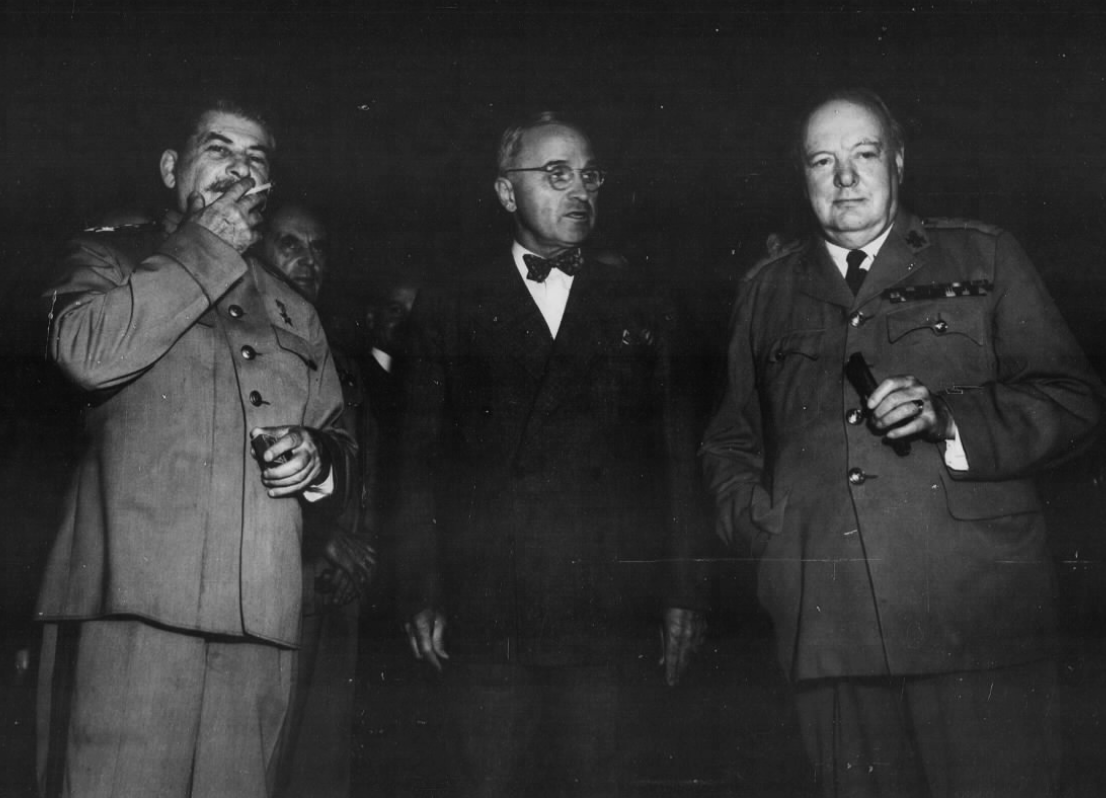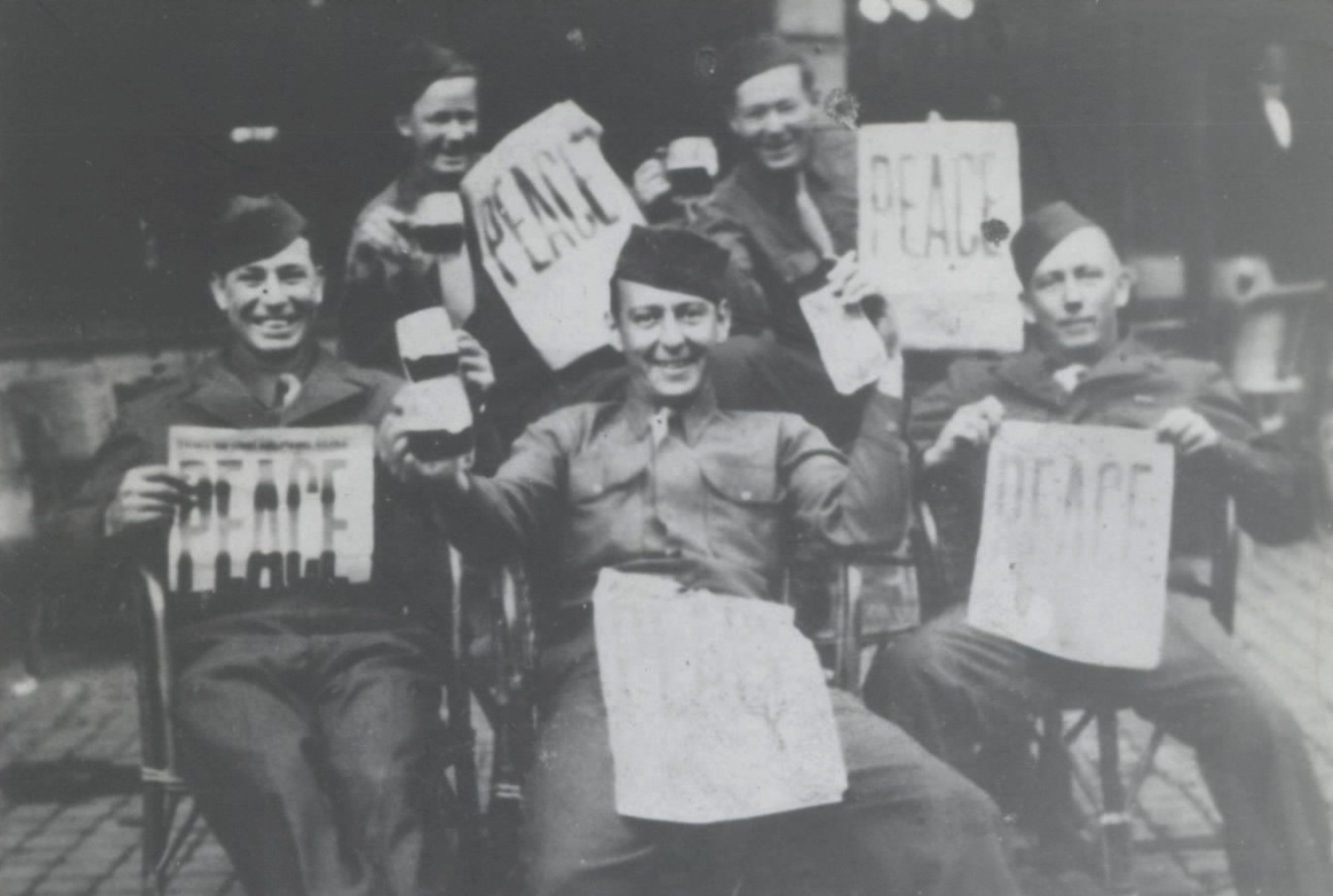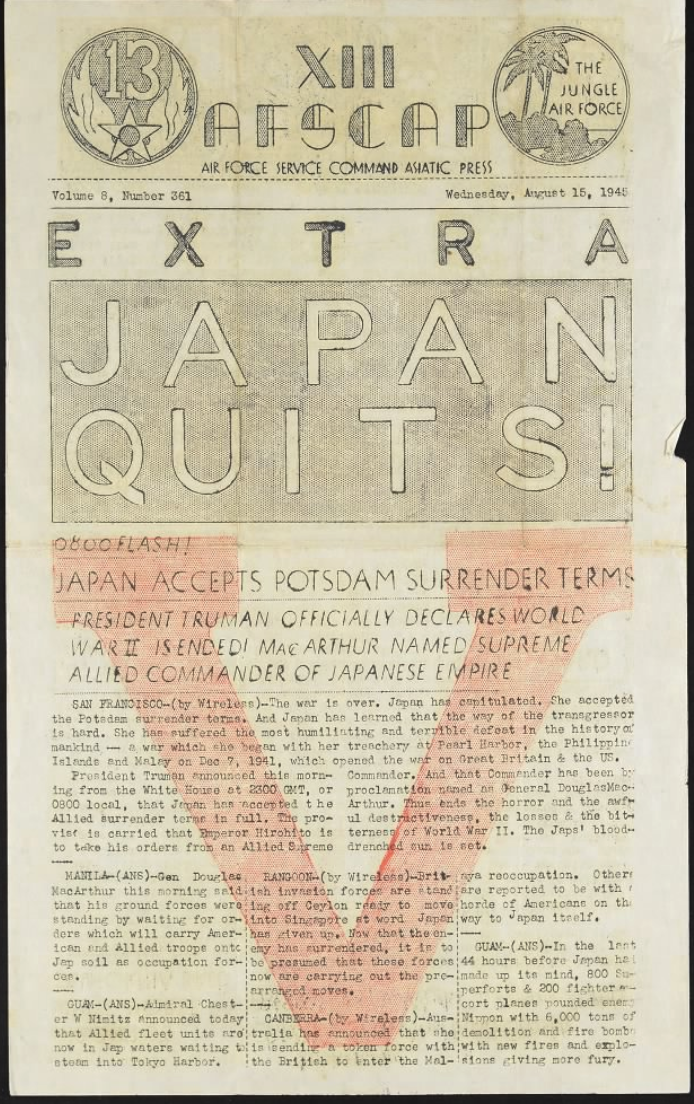Day in History – August 15, 1945: V-J Day and the End of WWII
The morning of August 15, 1945, dawned with the realization that after a long war resulting in some 60 million deaths worldwide, WWII was finally over and Victory in Japan (V-J Day) had arrived. Hours earlier, Emperor Hirohito announced Japan’s unconditional surrender, bringing WWII hostilities around the world to an end. President Harry S. Truman declared a two-day holiday and the war-weary world breathed a collective sigh of relief.
It had been three months since Allies celebrated a victory in Europe (V-E Day), on May 8, 1945. That celebration, however, was tempered by the fact that war was still raging in the Pacific. With all attention being turned to Japan, Allied troops continued their assault in the Pacific. On June 21st, the US completed the capture of Okinawa providing a base for troops to launch a final assault on Japan.
In July, leaders from the Soviet Union, the United Kingdom, and the United States met at the Potsdam Conference where they agreed to insist upon unconditional Japanese surrender. They warned that without a surrender, Japan would face “prompt and utter destruction.” During the conference, President Truman hinted at the possibility of a weapon that may change the tides of war. Components for that weapon, were in fact, already en route to the Pacific aboard the USS Indianapolis. After delivering atomic bomb components to Tinian, Japanese torpedoes sunk the Indianapolis on July 30th. Ironically, it wasn’t until V-J Day that word of the Indianapolis sinking reached the public, and on August 15th, the front page of many papers reported on both the Japanese surrender and the Indianapolis tragedy.

Meanwhile, aviators were rehearsing the atomic bombing mission, making practice flights in preparation. The Potsdam Conference wrapped up on August 2nd. Within one week, two nuclear weapons would be dropped on Japan resulting in the deaths of some 200,000 people, many of them civilians.
On August 6th, a B-29 bomber named Enola Gay dropped the first atomic bomb “Little Boy” on Hiroshima. A second B-29 bomber, Bockscar, dropped another atomic bomb, “Fat Man”, on Nagasaki three days later. The weapons delivered a devastating blow to Japan.

In the early morning hours of August 14th, the Federal Communications Commission was monitoring a Tokyo radio broadcast when they heard that an announcement accepting the terms of the Potsdam Conference was forthcoming. US Navy Admiral William Halsey, Jr., sent word to aircrews that were minutes away from their targets. “Cease firing, but if you see any enemy planes in the air, shoot them down in a friendly fashion,” he said. That evening, August 14, 1945, the news became official when President Truman announced the suspension of hostilities and the unconditional surrender of Japan at 7:00 p.m. Allies announced the surrender in their capitals at the same hour. As the news spread, throngs of people took to the streets, horns blasted, and bells tolled in celebration. An unofficial V-J Day celebration began spontaneously. The United States would officially celebrate V-J Day when the official Japanese Instrument of Surrender was signed on the deck of the USS Missouri in Tokyo Bay on September 2, 1945.

